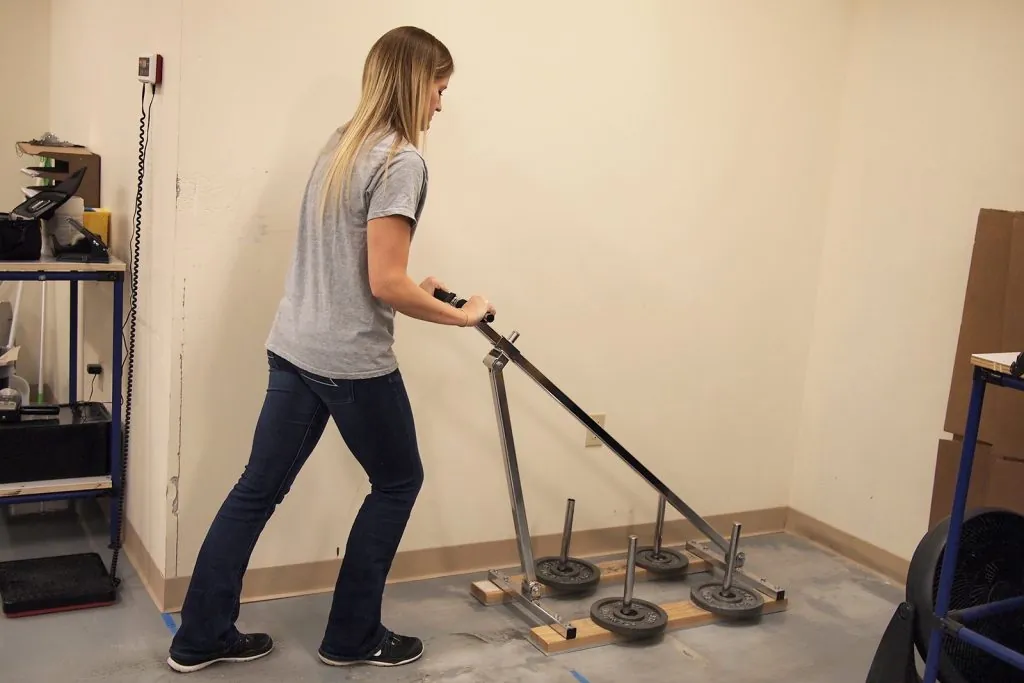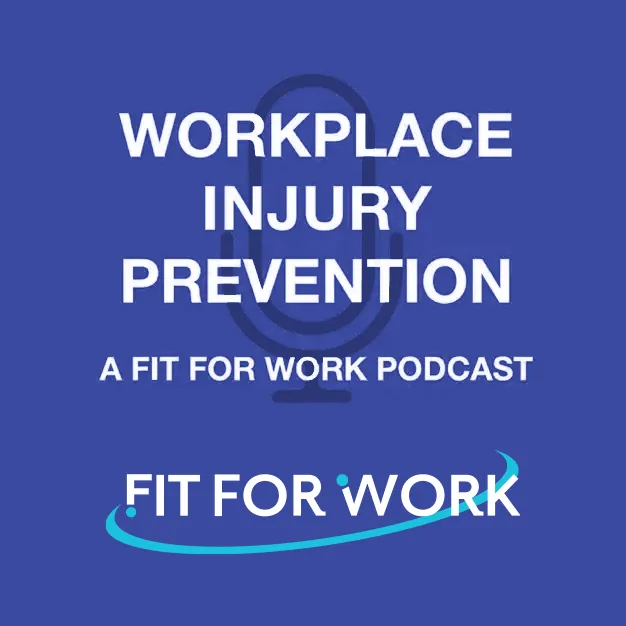By Richard Kochoa, PT, DPT, MD, TPS
Injury Prevention Specialist, Fit For Work
Introduction
When most people think of concussions, they picture athletes on the field—but did you know that mild traumatic brain injuries (TBIs) and concussion syndrome also occur in the workplace? These injuries can significantly impact employee well-being and productivity, often going unnoticed or misunderstood. Supporting workers through recovery and return-to-work requires thoughtful planning and awareness. This blog explores three key considerations to help employers and employees navigate that process effectively.
Understanding Mild Traumatic Brain Injury and Concussion
Traumatic brain injury is defined by the Centers for Disease Control (CDC) as “caused by a bump, blow, or jolt to the head or by a hit to the body that causes the head and brain to move quickly back and forth.” Mild TBI, which includes concussions, accounts for about 85% of all TBIs. These injuries can occur in various settings, including the workplace, and can have significant impacts on an individual’s cognitive, physical, emotional, and behavioral functions.
The CDC describes traumatic brain injury as a preventable injury that affects 1.6 to 3.8 million Americans annually, with 24% of these injuries occurring in the workplace.
Assessing and managing mild traumatic brain injury is vital for effective treatment and long-term recovery. If you suspect a mild TBI or concussion, it’s important to seek care from a healthcare provider as soon as possible. Early assessment is key to ruling out serious spinal and brain injuries, medical emergencies, and other neurological conditions that may occur simultaneously. This helps identify the often-overlooked “invisible disease” of concussion, which can lead to more severe complications like post-concussion syndrome if not properly addressed.
Symptoms of mild TBI and concussion vary for each person and may change during recovery. Symptoms can include:

Source: CDC
The Importance of Early Intervention and Management
When it comes to mild traumatic brain injury and concussion, early intervention is key to supporting recovery and minimizing long-term effects. A holistic approach is essential—one that considers the individual’s:
- Prior functional level
- Medical clearance status
- Concurrent illnesses
- Medical and surgical history
- Social, familial, and occupational demands
Initial care should include a thorough clinical history to identify risk factors for prolonged recovery. This should involve an age-appropriate, valid, and reliable symptom inventory, as recommended by the CDC. A follow-up assessment is typically advised within one to two weeks post-injury to monitor progress and adjust the treatment plan as needed.
Care for individuals with mild TBI or concussion is typically provided by a multidisciplinary team of healthcare professionals, including:
- Primary care physicians
- Neurologists
- Physiatrists (rehabilitation physicians)
- Athletic trainers
- Occupational and physical therapists
- Neuropsychologists, when cognitive symptoms are present
These providers are responsible for diagnosing the injury, managing symptoms, preventing secondary complications, and guiding a safe return to work.
Preventing Secondary Brain Injury
The Neurocritical Care Society Emergency Neurological Life Support Traumatic Brain Injury Protocol highlights the importance of preventing secondary brain injury from hypoxia, ischemia, hypotension, hematoma expansion, cerebral edema, brain compression, intracranial hypertension, seizures, and fever. Healthcare providers are trained to anticipate, detect, and treat these complications quickly to prevent neurological deterioration.
Return to Work Planning and Accommodations
The return-to-work process for individuals with mild TBI and concussion requires careful planning and accommodations. The CDC recommends that patients initially reduce both physical and cognitive exertion to help expedite recovery. Repeated evaluation of both symptoms and cognitive status is recommended to guide management considerations.
Employers should consider various accommodations to support the return-to-work process. These may include modified work schedules, job duty adaptations, and the use of assistive technologies. The Americans with Disabilities Act (ADA) requires employers to provide reasonable accommodations for employees with disabilities. This interactive process should proceed promptly to ensure that the employee can return to work safely and effectively.
An emphasis is also placed on the importance of open communication among the worker, employer, human resource manager, and supervisor to explore options for addressing the worker’s needs upon returning to work. This may include discussing relevant topics such as a gradual return to work, shorter hours, more breaks throughout the day, workload adjustments, and the possibility of taking on a new, similar, or different role.
Additional Considerations for Safety Leaders
Safety leaders can assist in ensuring a smooth return-to-work process for employees with mild TBI and concussion. Here are some additional considerations to enhance the effectiveness of the return-to-work program:
- Risk Assessment and Mitigation: Conduct a thorough risk assessment of the workplace to identify potential hazards that could exacerbate the employee’s condition. Implement measures to mitigate these risks, such as modifying workstations, providing ergonomic equipment, and ensuring a safe and supportive environment.
- Training and Education: Provide training and education to all employees, including supervisors and coworkers, about the signs and symptoms of mild TBI and concussion. This will help create a supportive and understanding workplace culture where employees feel comfortable discussing their condition and seeking help when needed.
- Monitoring and Support: Continuously monitor the employee’s progress and provide ongoing support throughout the return-to-work process. Regular check-ins with the employee, their healthcare provider, and the human resource manager can help address any concerns and make necessary adjustments to the return-to-work plan.
- Collaboration with Healthcare Providers: Establish a strong collaboration with the employee’s healthcare providers to ensure that the return-to-work plan aligns with the employee’s medical needs and recovery progress. This collaboration can help facilitate a smoother transition back to work and reduce the risk of reinjury.
- Promoting a Healthy Work Environment: Encourage a healthy work environment by promoting physical activity, stress management, and mental health support. Providing resources such as wellness programs, counseling services, and access to fitness facilities can help employees maintain their overall well-being and reduce the risk of further injury.
Conclusion
Mild traumatic brain injury and concussion syndrome require careful attention and management to ensure a safe and effective return to work. By understanding the nature of these injuries, implementing early intervention and management strategies, and providing appropriate accommodations, employers can support their employees’ recovery and lower the risk of a secondary injury or reinjury. Open communication and collaboration among all stakeholders are essential to achieving this goal.

Richard Kochoa completed his Bachelor of Science in physical therapy at Riverside College in the Philippines. After obtaining a permanent U.S. residency visa, he pursued his doctorate in neurologic physical therapy from Evidence in Motion and later became certified as a therapeutic pain specialist. Before immigrating to the U.S., he earned his medical degree from the University of St. La Salle-College of Medicine and trained in emergency medicine.
In 2021, Richard joined Fit For Work as an onsite provider, where he played a pivotal role in developing and expanding various services. His contributions include ergonomic analysis, ergonomic observation, pre-injury Safe and Smart lifting training, therapeutic pain science education, and early intervention.
Richard is currently completing his Fellowship training with the Tom Waugh Leadership Development program of the Texas Physical Therapy Association. Outside of his professional endeavors, he enjoys exploring various cultural, artistic, and nature-based experiences around the world with his wife and three children.
References





